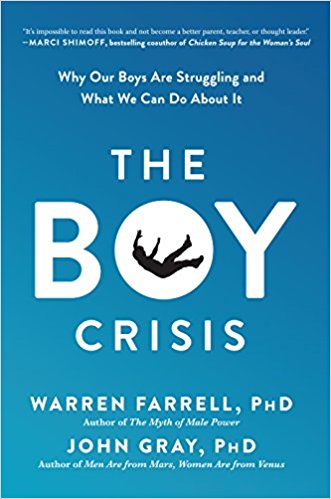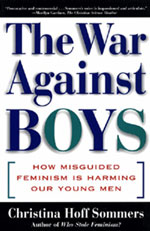Consider the mysteries of the teen mind
Many factors involved when a teens crosses from activism into unlawfulness
The Toronto Star, ANDREA GORDON, FAMILY ISSUES REPORTER, June 12, 2006.
Joseph Conrad called it "the glow in the heart that with every year grows dim." A century later, it's still hard to beat that description of the passion, energy and idealism of youth.
But how do those positive forces turn into destructive ones? What is it that makes a teenager cross the line from activism into unlawfulness?
The answer, according to experts in the dynamics of adolescence, is a complex mix of personality, circumstances, family relationships, peers and physiology.
"It's very murky, and too complicated to make sweeping statements about because there are so many factors at play," says Toronto psychologist and brain scientist Dr. Ron Clavier.
Adolescence has always been synonymous with fighting for causes and the need to belong. It's part of what makes young men warriors, whether during the medieval Crusades or World War I. And why youth have been swept up in movements from civil rights to Trudeaumania to environmental activism.
Of the 17 people in the Toronto area arrested earlier this month and charged with terrorist-related
offences, five were teenagers. Shocking at first perhaps, but not that surprising once you consider the mysteries of the teenage mind.
Brain development, while only part of the picture, is a place to start. Scientists used to think that by the time the body was all grown up, the brain was too. But now, thanks to technologies such as magnetic resonance imaging, they know that long after an adolescent has stopped putting on inches, their brain is continuing to develop. The pre-frontal cortex responsible for executive functions such as judgment, impulse control and decision-making based on assessing consequences isn't fully formed until the early or mid-20s.
And until it is, "they don't really have a full understanding of the impact of their actions on society or on themselves," says Clavier, author of the 2005 book Teen Brain, Teen Mind.
Meanwhile the amygdala the more primitive part of the brain that is the source of emotions, takes over. Hence, those over-the-top emotional reactions that parents often compare to the "terrible twos." And a tendency to see things as black and white.
In her 2003 book Primal Teen, Barbara Strauch says it's a common adult belief that teens consider themselves immortal and therefore go around blithely putting themselves in harm's way. But it's not that simple.
"Teenagers sometimes don't recognize different options, and can often be forced into making poor decisions in situations that are both emotional and stressful," she explains. "But contrary to how it often appears, teenagers do think, using whatever skills and knowledge they possess at the time."
Science is only one of many factors that affect judgment and behaviour, says Glenn DiPasquale, a Newmarket psychologist who has worked with youth for 30 years.
Early adolescence, generally described as age 13 to 15 but which can start as early as 11 and last until 17, is the stage where kids clue in that their parents' way isn't the only way.
They start to separate and create their own identity.
Often rejecting or embracing religion is part of that.
During those years of breaking away from parents yet yearning to fit in, teens can be ripe for the picking for a charismatic leader who comes along spewing interesting ideas and instilling them with a sense of collective power.
And particularly if they feel adrift, isolated or disenfranchised from their family, friends, teachers or society at large.
"People who recruit young people for nefarious purposes understand this intuitively," says DiPasquale. "We all need to be part of something bigger."
So at a time when kids appear to be pushing their parents away at every turn, what they need most is in fact the opposite parental support, acceptance and affection.
Marian Boer, chief psychologist with the York Region District School Board, says research shows that teens who have a strong relationship with their parents and are involved with their families are less vulnerable to being caught up in radical behaviour.
"If they've seen good problem-solving strategies and been encouraged to think `what will happen if I do this' or "what will happen if I do that instead' then they learn to think things through."
Equally important, she says, is not to shut down a child who brings up controversial topics, wants to explore extreme ideas or is rebelling against the family's values.
She says the best approach for parents, teachers or anyone else involved with teens is to keep talking and reasoning, even if you strongly disagree with their ideas and beliefs.
TEDx Dr Warren Farrell
TEDx - The Boy Crisis: Why Our Boys Are Struggling and What We Can Do About It
One of the foremost speakers and thinkers on gender issues
It's a crisis of education. Worldwide, boys are 50 percent less likely than girls to meet basic proficiency in reading, math, and science.
It's a crisis of mental health. ADHD is on the rise. And as boys become young men, their suicide rates go from equal to girls to six times that of young women.
It's a crisis of fathering. Boys are growing up with less-involved fathers and are more likely to drop out of school, drink, do drugs, become delinquent, and end up in prison.
It's a crisis of purpose. Boys' old sense of purpose-being a warrior, a leader, or a sole breadwinner-are fading. Many bright boys are experiencing a "purpose void," feeling alienated, withdrawn, and addicted to immediate gratification.
So, what is The Boy Crisis? A comprehensive blueprint for what parents, teachers, and policymakers can do to help our sons become happier, healthier men, and fathers and leaders worthy of our respect.

Why boys are in trouble
Boys have been painted as the bad guys in the push to encourage girls to succeed, leaving many young men feeling confused and alienated, wondering what they did wrong
The Associated Press
January 5, 1999
According to psychologist and author William Pollack, 'sports are the one arena in which many of society's traditional strictures about masculinity are often loosened, allowing boys to experience parts of themselves they rarely experience elsewhere.'
When Harvard Medical School psychologist William Pollack administered a test to a group of 150 teenaged boys a few years ago, the results were shocking.

The Boy Crisis Book
The Boy Crisis: Why Our Boys Are Struggling and What We Can Do About It
Authors- Waren Farrell PhD and John Gray PhD
What is the boy crisis?
It's a crisis of education. Worldwide, boys are 50 percent less likely than girls to meet basic proficiency in reading, math, and science.
It's a crisis of mental health. ADHD is on the rise. And as boys become young men, their suicide rates go from equal to girls to six times that of young women.
It's a crisis of fathering. Boys are growing up with less-involved fathers and are more likely to drop out of school, drink, do drugs, become delinquent, and end up in prison.
It's a crisis of purpose. Boys' old sense of purpose-being a warrior, a leader, or a sole breadwinner-are fading. Many bright boys are experiencing a "purpose void," feeling alienated, withdrawn, and addicted to immediate gratification.
So, what is The Boy Crisis? A comprehensive blueprint for what parents, teachers, and policymakers can do to help our sons become happier, healthier men, and fathers and leaders worthy of our respect. Read More ..

Health Canada Publication
The Invisible Boy: Revisioning the Victimization of Male Children and Teens
"... the existence of a double standard in the care and treatment of male victims, and the invisibility and normalization of violence and abuse toward boys and young men in our society.
Despite the fact that over 300 books and articles on male victims have been published in the last 25 to 30 years, boys and teen males remain on the periphery of the discourse on child abuse.
Few workshops about males can be found at most child abuse conferences and there are no specialized training programs for clinicians. Male-centred assessment is all but non-existent and treatment programs are rare. If we are talking about adult males, the problem is even greater. A sad example of this was witnessed recently in Toronto. After a broadcast of The Boys of St. Vincent, a film about the abuse of boys in a church-run orphanage, the Kids' Help Phone received over 1,000 calls from distraught adult male survivors of childhood sexual abuse. It is tragic in a way no words can capture that these men had no place to turn to other than a children's crisis line."
American Psychological Association
Dating Violence Statistics in the United States
Nearly one in 10 girls and one in 20 boys say they have been raped or experienced some other form of abusive violence on a date, according to a study released Sunday at the annual meeting of the American Psychological Association.
![]()
The mean T-shirt: From the Stupid Factory
Todd Goldman says his popular boy-bashing T-shirts are simply funny.
So why are retailers having second thoughts? Read More ..

Why boys are in trouble
Boys have been painted as the bad guys in the push to encourage girls to succeed, leaving many young men feeling confused and alienated, wondering what they did wrong
The Associated Press
According to psychologist and author William Pollack, 'sports are the one arena in which many of society's traditional strictures about masculinity are often loosened, allowing boys to experience parts of themselves they rarely experience elsewhere.'
When Harvard Medical School psychologist William Pollack administered a test to a group of 150 teenaged boys a few years ago, the results were shocking.
![]()
Where the boys are
The Globe and Mail
February 1, 2003
Academically, boys across the country are lagging behind the girls, but a Montreal public school has seen dramatic improvement by separating the sexes in classes. It allows teachers to tailor curriculum and style to suit each sex. The result? The number going on to college has nearly doubled. INGRID PERITZ reports
MONTREAL -- The teenage girls at James Lyng High School like to flirt with boys. They like to tease them, joke with them, even date them sometimes. But attend class with them? As the giggling girls in one math class this week might say, "Gross."
Luckily, they don't have to. Coed James Lyng splits boys and girls up at the classroom door. The division of the sexes is credited with helping turn a faltering inner-city high school into an education success story.


